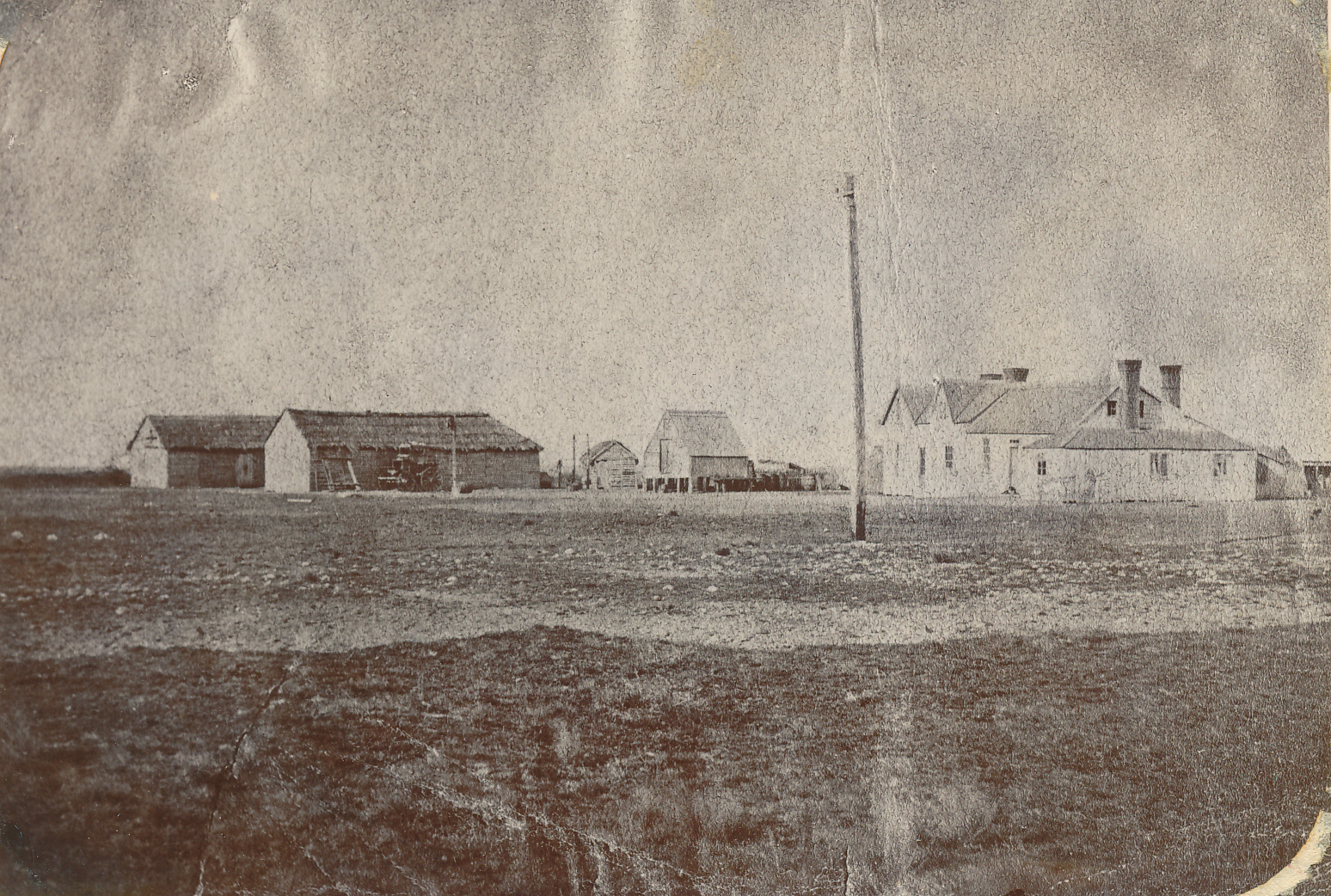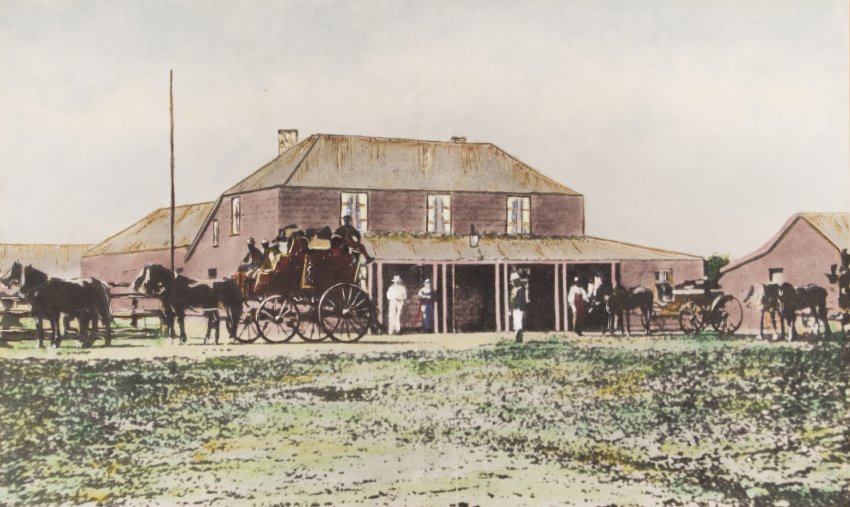The Ashburton Arms

The Ashburton Arms (William Turton's Accommodation House)

1860s-era photograph of the Ashburton Arms accommodation house (right) with Cobb & Co. stables at left. (Ashburton Museum reference 03.1988.0225.)
Food, drink, beds, and a fledgeling township
Established in 1858, the Ashburton Arms accommodation house was the first structure built within the bounds of what became the Ashburton Borough. In an early account referenced by John Brown in his book Ashburton, New Zealand: Its Pioneers and Its History 1853 - 1939, the proprietor and proprietress of the Ashburton Arms Accommodation House were singled out as notable figures: "Ashburton in those happy days was a small place, with amusements of a very primitive character - but the hospitality of Host Turton and his good wife was noted throughout the country."
The Ashburton Arms was operated by William and Frances Turton. William ferried travellers over the Hakatere/Ashburton River on horseback, offering a ride to anyone who drew his attention with a "coo-ee" during the day, or with a fire by night. Between 1858 and 1864, the latter year being when Robert Park surveyed the town of Ashburton, William's wife Frances Turton had few female acquaintances, and catering for inn visitors was not an easy task at first. Meat was acquired from Tancred and Allen's Ashburton run, the homestead of which being two miles from them, but sometimes wild pig could be caught in the swamp where Tinwald would soon be established. Until the Turtons had a suitable garden, vegetables came from Christchurch via Mr. Stobie's coach.
William Turton, besides being ferryman, was on occasion called upon to act in the roles of sexton, parson, and postmaster. In 1869, William gave up the Arms and worked in a store built alongside, also keeping his role as postmaster for two years longer. In the meantime, the Government bought the Ashburton Arms and divided it into police barracks and a telegraph office. When William resigned as de-facto postmaster, the telegraph office in the former Arms became Ashburton's first fully-fledged post and telegraph office, under Mr. Docherty.
In February 1886, the former Ashburton Arms came to an end, when the building was sold at auction by Mr. Thomas Bullock, to Messrs. Sealy Bros., nurserymen, who after demolition converted part of it into a stable and part into a conservatory on their own property. Twenty years earlier than this however, in 1866, two brothers of William Turton - John and Thomas - built a new two-storeyed building just up the road, known as "The New Inn", which continued to serve private and commercial travellers alike under several proprietors for years to come.
Hand-coloured photograph of the New Inn, built in 1866. (Ashburton Museum reference 02.1981.0870.)
The Great Storm of 1868
The Ashburton Arms is referenced in a number of personal accounts from the period of early European settlement in the Hakatere/Ashburton District. These include the writings of Samuel Butler, Alex Hewson, Lady Mary Anne Barker, and the diary of Edward Reginald Chudleigh.
In a notable incident, an anonymous patron of the Turtons' house, and the other guests staying at the time, had a visit quite unlike any other. An unnamed correspondent for the Lyttelton Times published an article on 10 February 1868 which detailed their experiences while travelling through our district during the infamous "Great Storm" of 1868.
After enduring several troubling river crossings by coach between Timaru and Ashburton, now thoroughly soaked, they and their travelling companions made it to the Ashburton Arms intact. However, after rummaging through their luggage for a change of clothes, our writer found to their horror that all their belongings were soaked. The coachman drove off without waiting for them, and they were left behind at the accommodation house. “After borrowing a change from the obliging landlord, and getting a good dinner, things assured a much brighter aspect; still the wind kept howling frightfully, and the river was rising, though no thought of real danger occurred to anyone.”
The writer went to bed at 10 o’clock that night, expecting a restful night’s sleep, but two hours later they were told to get up immediately as “the river was still rising fast and was, in fact, at full flood.” They go on to describe the following events: “The water was within a few inches of the door. At this time a faint cry was heard, and some men returned, having to wade some distance up to their shoulders, with a woman and a baby, and it was known that the house was flooded, and would probably be carried away immediately. Still the water kept rising, rising, fast; and, after measuring, we found it within an inch of rushing in the house; in fact, it had commenced to flow under one of the doors.”
“The agony of the poor people coming in at this time was indescribable; most of them had seen pigs, crops, poultry, sheep, and, in some instances, horses washed away, and their houses nearly floating before they quitted them. Through what can be called only the mercy of God the wind changed, and, as it was ascertained the following morning, the river had broken into a creek, which seemed to carry away a deal of the water.”
In closing their correspondence with the Lyttelton Times, our dear writer says “Had it not been for this intervention of Divine Providence I should probably not be alive to write this, my first, and I can assure you I fervently hope my last, experience of the freaks and vagaries of the New Zealand rivers.”
Overall, the Great Storm of 1868 and the resulting floods caused between £500,000 and £1 million in damage across the country (roughly $20-50 million today, adjusted for inflation.)
The Ashburton Arms, however, weathered the storm. (Click here to read more on the Ashburton Museum blog.)

